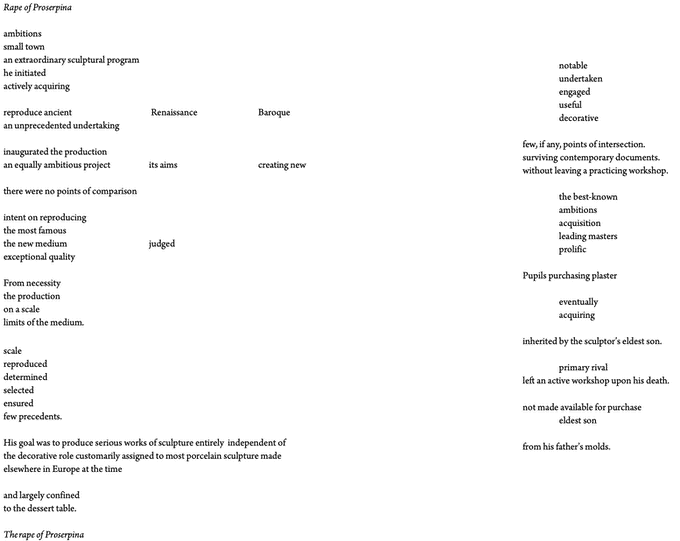Macushla Robinson is an Australian arts worker and current PhD candidate in New York City. She has launched a kickstarter campaign to publish her alternative ‘guerrilla guide’ to works in the collection of the Metropolitan Art Museum, NYC.
Robinson searched the Met’s collection for artworks that have ‘rape’ in the title or cataloguing data. She contemplated the accompanying descriptions produced by the museum and for her project will re-deploy the language of the existing wall texts or labels, all of which are publicly available, in a poetic book.
There are 181 applicable artworks from large paintings and sculptures to print folios, ceramic plates, pocket watches, vases, snuff boxes and other decorative homewares. Only 6 of these 181 results are works by women.

Having worked in a Sydney museum, Robinson is familiar with the language and conventions of creating the texts which accompany works in the collection.
With this in mind and upon reading the 181 labels she notes a trend, that mostly attention is given to the mastery of the artist or materiality of the work. As such she states ‘It leaves us wondering what rape actually means here, in the sanctified space of the museum.’
An equal aim she holds is to highlight the number of works of this nature in the collection, how they are presented to the public, and connections to the world in the period they were made and now.
Robinson’s book will pull focus to the idea that ‘Art history has traded on stories of rape to create drama, to set up opportunities to paint nude women, and to display the mastery of the artist over his subject. But these images, and the way we describe them, shape how we think about women’s bodies and what can be done to them. Millions of people visit the Met Museum every year. The way these images get displayed and talked about matters.’
In response to an online commenter engaged with but unsure how to feel about her project, Robinson sketched out how the book will look and operate;
The book will include black and white details of individual works in between sections, however these will not be identified and certainly won’t cover all the works that are referenced in the text. There are 23 sections, one containing everything relating to Europa, another to Persephone, another to the Sabine Women, and so on.
The process I have undertaken has been to pull back from identifying individual works, focusing rather on the repetition of certain kinds of language and descriptive motifs. It’s an interpretive process of erasure, where the collection search and analysis becomes a point of departure for a much more iterative and poetic endeavour.

With 42 hours left, and at the time of publishing this article, Robinson’s fundraiser had exceeded its target, raising $6,454 of the $3,486 goal. With this support she intends to stage an event outside the museum with copies of ‘Every Rape in the Met Museum’ for sale, 181 copies each individually dedicated to a different work in the collection.